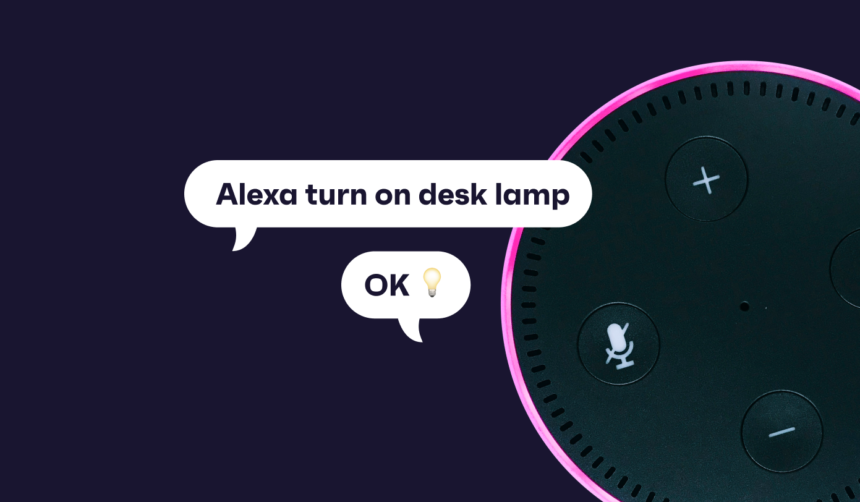We get it. The media landscape is constantly changing and keeping tabs on the latest media trends takes time and effort. You may be asking questions like:
- How can my brand succeed with retail media?
- Is traditional media still relevant to my audience?
- What’s the role of influencers in all this?
Take a breath, we’ve got your back. Here are the top media trends to help set your brand apart from the competition.
1. Smartphones aren’t the only mainstream smart products
Just about anything can be done on our smartphones these days – it’s rare to meet someone who doesn’t have one.
This widespread adoption of smartphones has paved the way for a new era of smart technology. From smartwatches to thermostats, intelligent features are increasingly becoming the norm.
Our data shows a jump in ownership of smart home products, with several shifts happening over the last decade. Smart TVs have climbed up the ranks, passing both tablets and game consoles in ownership rates since 2014. The smartwatch market has also ramped up and now has a much more diverse user base.
In 2015, 36% of US/UK Apple Watch owners were female; today, it’s 57%.
Health/fitness tracking is still the number one reason for having a smartwatch, but its use cases are expanding. For owners of brands like Sony and G-Shock, entertainment, browsing, or communication rank top. Looking ahead, consumers might start leaning more heavily on an even smaller screen for everyday scrolling, which could mean extra focus on strong visuals in ads, and less on text and click metrics.
2. Streaming hasn’t overtaken broadcast TV just yet
Broadcast TV’s reach has dwindled, with late 2023 being the very first time that 1 in 10 internet users said they don’t watch any broadcast TV on a typical day. Streaming now represents 44% of consumers’ total TV time, compared to 26% a decade ago. These are big developments, and something brands shouldn’t ignore.
But among all these changes, it’s also important to recognize that broadcast TV still commands the largest share of total TV time, and is a great channel for reaching certain audiences.
Leveraging broadcast TV to target specific groups of heavy watchers – like baby product or pet food buyers, cruise enthusiasts, and spirit drinkers – is a good strategy, and a rising trend in media. Globally, TV ads remain a top channel for brand discovery.
31% of consumers say they usually find new brands through TV ads, compared to 17% who find them via pre-roll ads.
While continuously revising and adjusting TV ad budgets is wise, we don’t recommend completely shifting away from broadcast to over-the-top (OTT) platforms – especially for brands seeking to maximize their reach and impact.
3. Keep an eye on FAST streaming
Free ad-supported streaming television (FAST) models within platforms like FreeVee, Tubi, and Pluto TV have gained serious traction, with American viewership soaring.
The number of Americans saying they watch FreeVee monthly has grown 108% since 2021.
Marketers are seizing this opportunity, given that 23% of FreeVee users say they typically discover products through pre-show ads. This space also has the benefit of lower ad rates, clearer performance metrics, and the potential for interactive ads.
Not to mention, FAST sites are a treasure trove of unique audiences. For example, 32% of FreeVee users don’t use Netflix – and this audience does more healthcare research online, and engages more with financial investment tools and publishers like NBC News. This highlights just a few of the sectors that could benefit from this evolving space.
4. AI’s changing the way we search
We’ve all thought about how AI can be used to write an essay or create the perfect recipe, but what about trying to find a sustainable footwear brand? Or searching for makeup companies that don’t use pore-clogging ingredients?
AI platforms are now one of the top three ways Gen Z search for information. This generation’s preference for social platforms over search engines when doing shopping-related research emphasizes their desire for tailored experiences, which helps explain their love of AI.
With a fifth of 12-15 year-olds saying they mainly use social media to find things to buy, we anticipate Gen Alpha will follow suit in their search habits. To stay ahead, brands should incorporate AI into their strategies; while trust in chatbots varies, their popularity is no doubt on the rise.
28% of consumers say personalized recommendations would make them consider using AI when shopping online.
Early experimentation with AI-driven features will give brands a competitive edge, as consumers increasingly consider AI for shopping assistance – such as support with questions, deal alerts, and price comparison.
5. Ecommerce and retail sites are making waves
Ecommerce sites are growing, giving retailers access to valuable privacy-compliant data for targeted advertising, and fueling the significance of media networks in the eyes of advertisers. This is especially prevalent in the US.
The number of Americans saying they typically hear about products via ads on ecommerce sites has grown 17% year-on-year.
Retail media networks are a gateway to connect with diverse and often overlooked audiences like stay-at-home parents, and those who identify as obese or overweight. These consumers are more likely to discover brands on ecommerce or retail sites than the average American, and many don’t feel seen by traditional advertising methods.
Through strategic partnerships with retailers, brands can build stronger connections with these groups. Our retail insights can guide brands by identifying relevant ecommerce sites for their audience, and helping them craft ads that’ll resonate. For example, full-time parents in the UK stand out for using apps like Wayfair and Vinted, while expectant moms use platforms like Gumtree more.
6. VR devices are the next comeback kid
Apple’s Vision Pro marks its first new hardware release since the Apple Watch nearly a decade ago, which in the world of media consumption, is kind of a big deal. We’ve considered its potential impact on the VR space, based on Apple’s influence on the smartwatch market.
The trajectory of the Apple Watch shows the need to be patient when judging a product category’s success. The device sparked an initial spike in sales, but it wasn’t until years later that they truly accelerated, helped by more competitive pricing and increased at-home exercise during Covid lockdowns.
More people in North America currently own a VR headset (9%) than those who owned a smartwatch before Apple’s entry into the market (7%).
While many retailer apps are already on the Vision Pro, companies that understand their users’ motivations stand the best chance of effectively leveraging this platform as a marketing channel in the future.
7. Tried-and-true outlets are best for building brand awareness
Today’s media landscape is multifaceted, and marketers may feel pressured to navigate several platforms to reach consumers effectively, especially with budget constraints. But brands needn’t spread themselves thin; focusing on a select mix of platforms aligned with their specific objectives is key.
With brand exposure being a top priority for many companies, it’s important to recognize that channels like search engines, brand/product sites, and social media ads excel at improving visibility. Over a third of search engine users say they typically discover brands or products through them, which is much higher than for less tried-and-tested outlets.
Only 8% of simulation gamers make discoveries via ads in virtual spaces.
On the flip side, emerging platforms like virtual spaces are especially good at fostering loyalty among existing customers. They have their merits, depending on the goal.
By strategically selecting platforms based on desired outcomes, brands can maximize their resources and ensure effective communication with their audience – all while staying within budget.
8. Small brands are scoring big on TikTok Shop
TikTok’s a media trend in itself, especially now that we have TikTok Shop.
58% of TikTokers say they’ve used TikTok Shop before, with 26% making a purchase.
While worries about product quality and financial security still deter some people from buying on social media, these early adoption numbers have potential. Consumers who use visual media like vlogs or livestreams are far more likely to trust online reviews, highlighting the influence of content-based results.
Social shopping offers strong ROI, particularly for smaller companies that lack the resources to build awareness. TikTok Shop users mainly buy from brands they discover through the tool rather than ones they’re already familiar with, which explains why workers at small and medium-sized businesses are more likely to say their company has a TikTok account they use to sell to customers.
9. Consumers have grown less responsive to ads that feature social responsibility
A top growth initiative among business professionals overseeing media or content is enhancing marketing strategies, which involves crafting ads relevant to their audiences. To do this, they need to keep track of changes in ad preferences, which are evolving alongside tighter budgets.
Between 2021-2023, there was a 20% rise in the number of US/UK consumers wanting ads to provide discounts.
We’re also seeing more demand for product information and entertaining content, a sign people want ads to be light-hearted and practical.
On the other hand, consumers are less keen on content featuring social responsibility and are wary of “CSR washing,” as seen in our research.
This doesn’t mean CSR efforts are out. For certain brands, purpose-driven messaging can be effective, provided they’ve done thorough customer profiling and it aligns with their mission. Also, the appropriateness of purpose-driven messaging varies across media channels. For instance, heavier podcast listeners, who are more interested in social activism and helping their community, are more receptive to this content.
10. Influencers can help brands connect with underrepresented groups
Despite some big strides made in the name of representation, marginalized groups still struggle to see themselves reflected in various spaces, leading them to seek answers elsewhere.
People of color trust influencers more than average, and are less swayed by traditional ads.
This signals a gap between conventional marketing tactics and the realities of diverse communities. This is voiced by Black women in the US, who are nearly three times more likely than the average American to say finding suitable hair products is difficult.
Insights taken from influencer strategies can inform traditional ads, and brands creating targeted marketing campaigns should remember it’s all about quality representation, not just visibility.
11. Unlikely partnerships are opening up in sports
Other growth initiatives among marketing and content leaders include improving products and services, fostering innovation, and enhancing differentiation against competitors, which clever partnerships can help with.
Cross-sector collaborations are worth considering. More people are watching sports on social platforms, especially combat sports, which have seen big jumps in engagement among unexpected demographics like mascara wearers and Forever 21 shoppers. And sports companies can look to TV streaming services as a way to diversify their fan base even more.
Over 1 in 5 consumers say live sports events are important when streaming TV.
Live content can make a big difference for TV platforms, and sports brands can use our data to find their niche in these spaces. Amazon Prime users most stand out for their interest in cricket and American football, for example, while Disney+ users are unique for engaging with skateboarding and ice hockey.
12. Luxury meets horror games for surprisingly stellar results
Another promising partnership marketers can tap into is one you might not expect: Luxury brands and horror/survival games. In fact, horror/survival gamers are twice as likely to want this kind of collaboration – that’s higher than gamers of any other genre.
37% of Resident Evil players are interested in luxury and gaming collabs.
Among those interested in luxury and gaming partnerships, virtual fashion items for characters rank highest in popularity, followed by esports merchandise and gaming accessories, pointing to the many different directions these joint efforts can take.
If brands don’t want to go down the route of collabs, in-game ads could be a good option for certain product categories. Buyers of various drinks, cosmetics, and clothing brands are more inclined to watch these ads, with UNIQLO serving as a good example.
Our last thoughts on the top media trends of 2024
In a landscape as dynamic as media, getting all the insight you can on your target audience, and the industry as a whole, will help you communicate with confidence.
Opportunities are abundant; from the rise of smart products to the enduring influence of broadcast TV, or from the transformative power of AI to the potential of unlikely partnerships. It’s just a matter of uncovering these media trends with the right data.









